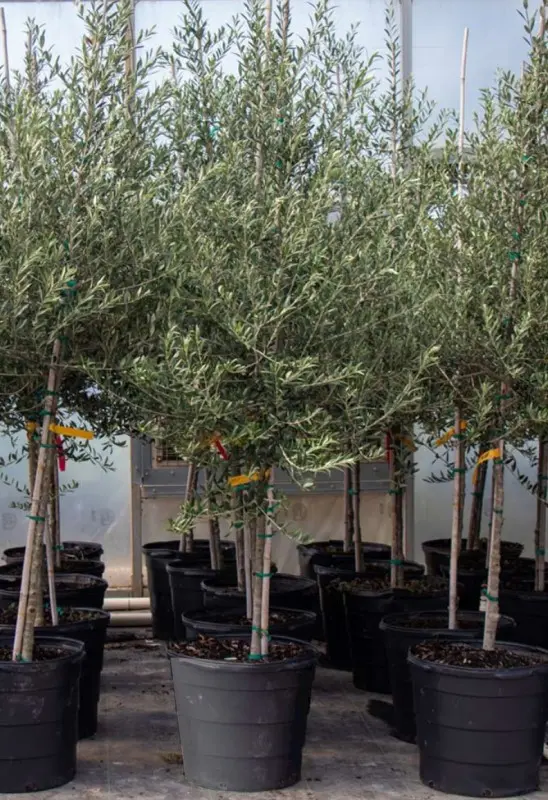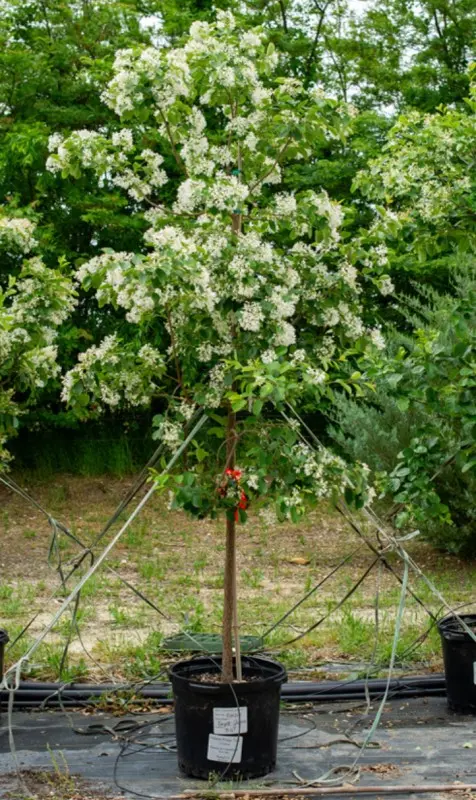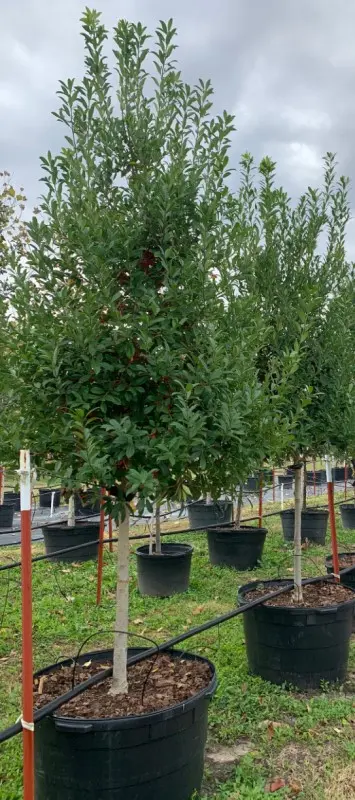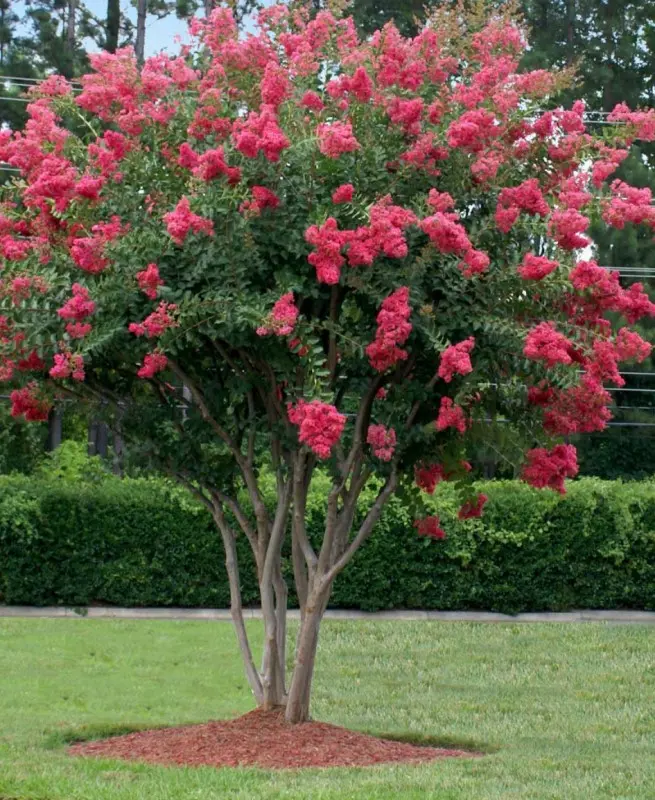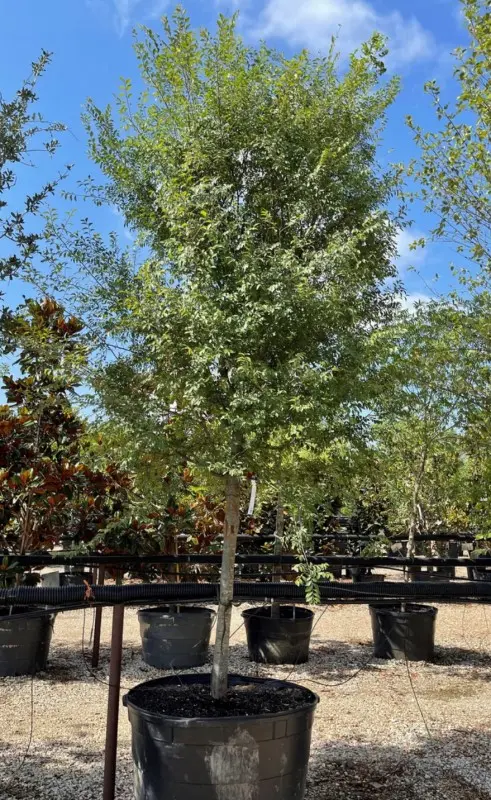Description
Olive Tree (Olea europaea) is an evergreen tree native to the Mediterranean region, renowned for its silvery-green foliage, gnarled trunk, and edible fruit. Cultivated for thousands of years, Olive trees are highly valued for their olives and olive oil, as well as their ornamental beauty in landscapes. The tree’s narrow, elongated leaves are dark green on top and silvery-gray underneath, creating a distinctive, shimmering appearance. Olive trees bloom in late spring, producing small, fragrant, creamy-white flowers that give way to green fruits, which ripen to a purplish-black or dark green in late summer or early fall.
Typically growing 20 to 30 feet tall and wide, Olive trees have a slow to moderate growth rate and can live for centuries, with many specimens displaying their signature twisting, gnarled trunks as they age. They thrive in USDA zones 8-11, preferring full sun and well-draining soil with a slightly alkaline pH. Olive trees are drought-tolerant once established and can withstand hot, dry climates as well as coastal conditions, making them ideal for Mediterranean and arid landscapes. While they are frost-sensitive, certain cold-hardy varieties can withstand brief dips in temperature, allowing them to grow in slightly cooler regions.
Low-maintenance and relatively pest-resistant, Olive trees require minimal pruning, typically in late winter to early spring, to shape or control size. They are often used as specimen trees, in groves, or in pots, bringing a classic, Mediterranean aesthetic to gardens, courtyards, and patios. With their elegant foliage, historical significance, and adaptability, Olive trees add both functional and ornamental value, creating a timeless look in landscapes that recalls the warmth and heritage of the Mediterranean.

